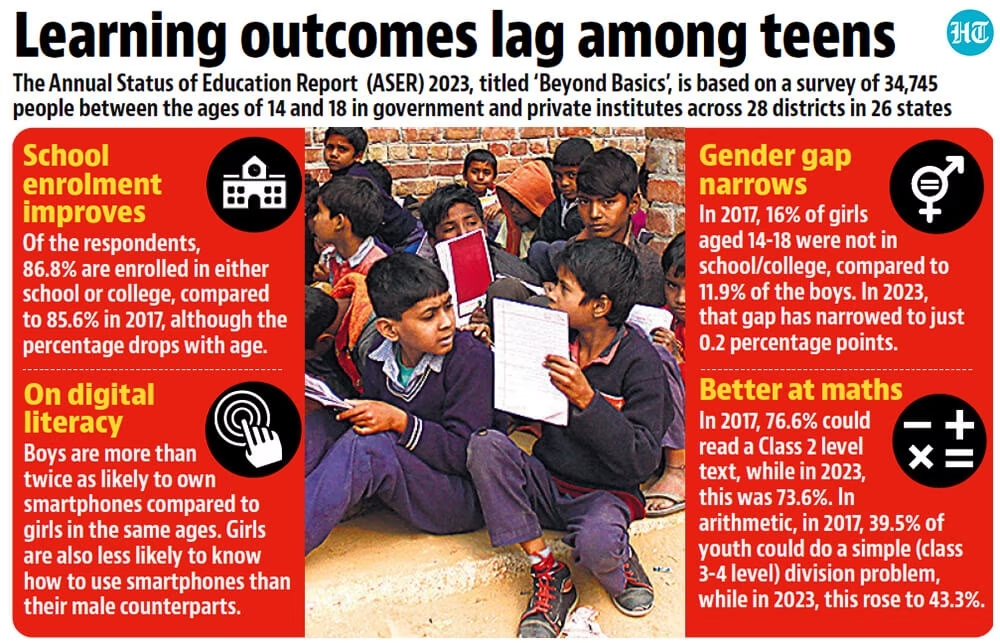It demonstrates that the majority of kids between the ages of 14 and 18 are so lacking in fundamental knowledge that they are unable to even come close to meeting the standards set for pupils in Classes II or III.
It is critical to reflect and develop corrective measures because 25% of the kids cannot read any text in their native tongue with fluency, more than half are unable to do basic division problems, and more than 42% draw a blank while reading simple words in English.

Source: Hindustan Times
The results serve as a wake-up call to locate and close any gaps in the education that kids receive in elementary school. Surveys performed over the years have revealed similar shortcomings, with the Covid-19 pandemic having a particularly negative effect on studies because of the disruption of scheduled classes.
Rural pupils face unique challenges since government schools have long-standing problems that have not been fixed. Regarding the improvement of school infrastructure, not much can be said; state governments still have to deal with teacher absenteeism and unfilled positions in schools situated in rural or isolated locations.
Source: Aaj Tak
The rise of digital literacy is the sole encouraging finding of the ASER, since 90% of respondents own cell phones and are proficient with them, with boys outperforming girls in this regard. Perhaps this finding holds the secret to raising the nation’s literacy rate. To effectively reach out to children in rural areas, policymakers should investigate the use of hybrid teaching methods.
What do you think about this? Comment below.

